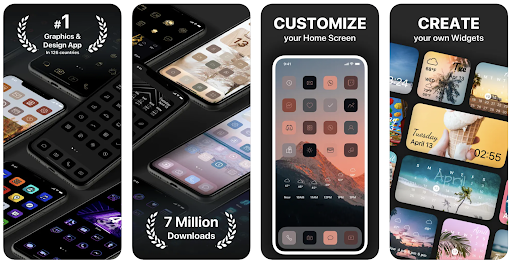STORIES AND APPROACHES FROM DESIGNERS AND DEVELOPERS.
No-code, “mo-human” AI chatbots…

Sometimes chatbots can be helpful, but most times they’re just a frustrating obstacle between you and a real person. But what if chatbots really understood you and treated you like a human? What if they actively listened, empathized with you, and even told jokes? That’s exactly what Michelle Zhou has created. A computer scientist by training and an expert in human-centered AI, Michelle is the co-founder and CEO of Juji, a company that’s aiming to be “The Apple of AI” by building the world’s only no-code AI cognitive chatbot assistants. Michelle joins The Next Great Thing podcast to talk about how she’s creating no-code AI chatbots that feel and act more human – and her mission to democratize AI so that it’s accessible for any organization (or person) to use.
Listen to The Next Great Thing>
Give your website or app a glow-up with 2022’s on-trend colors…
Heidi Klum said it best: “In fashion, one day you’re in; the next, you’re out.” OK, so you’re not competing on Project Runway, but the same aesthetic rule applies when it comes to selecting colors for your website or app. Color is an essential way to communicate your branding, evoke emotion, and connect users to the vibe of what you’re all about. It can also impact conversion rates. Think about using soothing creams and beiges. Exciting oranges. Optimistic greens. These are just some of the colors that are “in” this year from the world of not only web design, but fashion, furniture, and home decor. We can’t, however, tell you if the same will be said for 2023!
How to build empathy across all stages of UX design…
Great design is intended to solve problems or empower people to solve them themselves. But how can you create great UX design if you don’t know the problems people have? Having empathy -- or knowing where and how to find it -- throughout the UX design process, from research to writing, is essential to designing human-centered products and experiences that actually solve people’s needs, not your assumptions about what they need. There are lots of ways in which empathy is used at different stages of the design process, including in user interviews, journey maps, and personas. Mastering all the tools and techniques for building empathy helps us avoid costly mistakes, but it only happens with practice and persistence.
Your guide to user empathy>
Our Team’s Pick for App of the Month: Brass
Home sweet (custom) home…
The factory default settings on your iPhone’s home screen? Borrrr-ring! Customize it and create your own home screen aesthetic with Brass, our team’s winner for app of the month. The iOS app, which consistently tops the App Store Graphics & Design charts, lets you zhuzh up your phone’s app icons, access hundreds of themes, and create your own widgets. We’re obsessed with how Brass makes customizing your phone fun and easy. There are endless options for adding pizzazz to your home screen and making your iPhone look and feel more personal. Best of all? Brass is free. No subscription required (though you do have to watch ads to unlock icons, which seems like a fair deal to us).
7 steps for conducting a UX audit…
Is your UX connected to clearly defined business requirements? Do you have a clear understanding of how customers are using and experiencing your website or app? What about your competitors – have you conducted research on them yet? Conducting a UX audit is the first step to developing a new product roadmap. What’s more, it’s beneficial to multiple stakeholders across the business, including (but not limited to) project managers, developers and designers, and even the CEO. Thorough and thoughtful UX audits can help you spot new business opportunities and identify reasons why things are going wrong, like high bounce rates, navigation ambiguity, and churn rate. And, it helps things go right like boosting user satisfaction, reducing costs, and increasing customer retention. Don’t know where to start? We’ve got you covered.
Learn how to conduct a UX audit>
Subscribe to The Next Great Thing newsletter
.png?width=300&name=wonder%20june%20(1).png)


COMMENTS